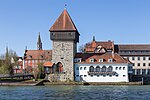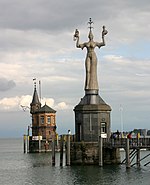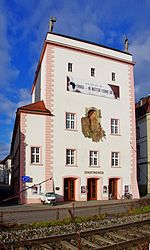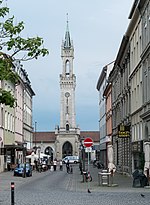2017 Konstanz shooting
2017 mass shootings in Europe2017 murders in GermanyAttacks on nightclubsJuly 2017 crimes in EuropeJuly 2017 events in Germany ... and 2 more
Mass shootings in GermanyMass shootings involving AR-15–style rifles
On 30 July 2017, a mass shooting occurred at Gray Nightclub in Konstanz, Germany. The shooter killed one adult and injured four others, two seriously. Another man was reportedly injured when attempting to stop the shooter with a metal bar. The shooter died of his wounds after being shot by police. The shooter was a relative of the nightclub owner and was involved in a family feud.
Excerpt from the Wikipedia article 2017 Konstanz shooting (License: CC BY-SA 3.0, Authors).2017 Konstanz shooting
Seestraße, Verwaltungsgemeinschaft Konstanz
Geographical coordinates (GPS) Address Nearby Places Show on map
Geographical coordinates (GPS)
| Latitude | Longitude |
|---|---|
| N 47.666666666667 ° | E 9.1833333333333 ° |
Address
Seestraße 13a
78464 Verwaltungsgemeinschaft Konstanz, Konstanz-Petershausen-Ost
Baden-Württemberg, Germany
Open on Google Maps










